Raphael Slithers into the Deep
Our second float, “Raphael,” has been deployed in the Southern Ocean
Raphael— Salinas High School; Salinas, CA
Location: 64° 28′ 17.4” S; 80° 2′ 12.12” E
Time: Wed 06 MAR 2024 10:54 UTC
Temperature: -0.9°C, Wind 20 kts SW
Float Number: 21499
Float Type: Apex
Float Program: SOCCOM
This float was adopted by Salinas High School in Salinas, CA and named Raphael in honor of their class pet, a snake named Raphael.
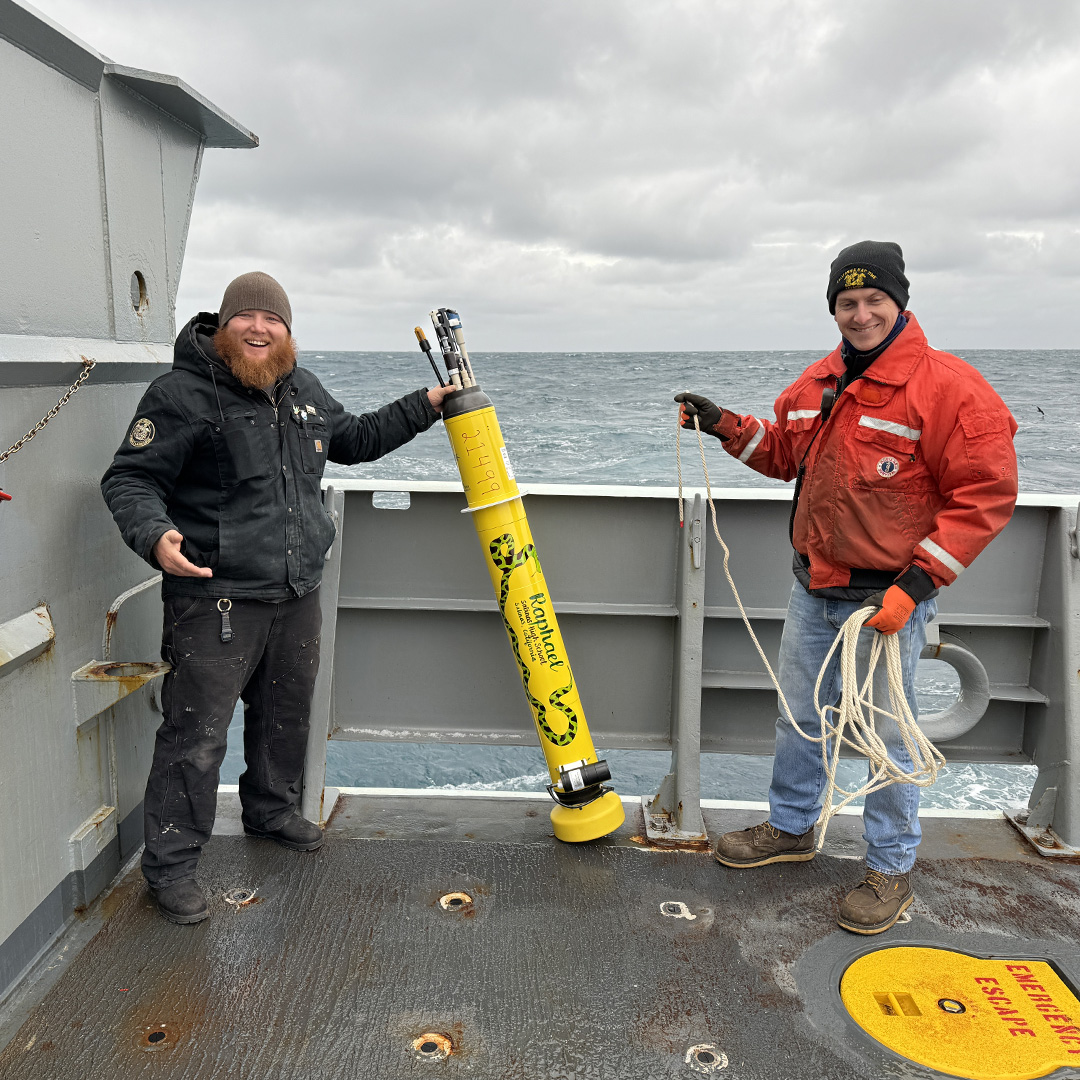
AB Aaron Walker (L), who helped deploy the float, was excited to see that it was adopted by Salinas High School, since he is a Monterey local.
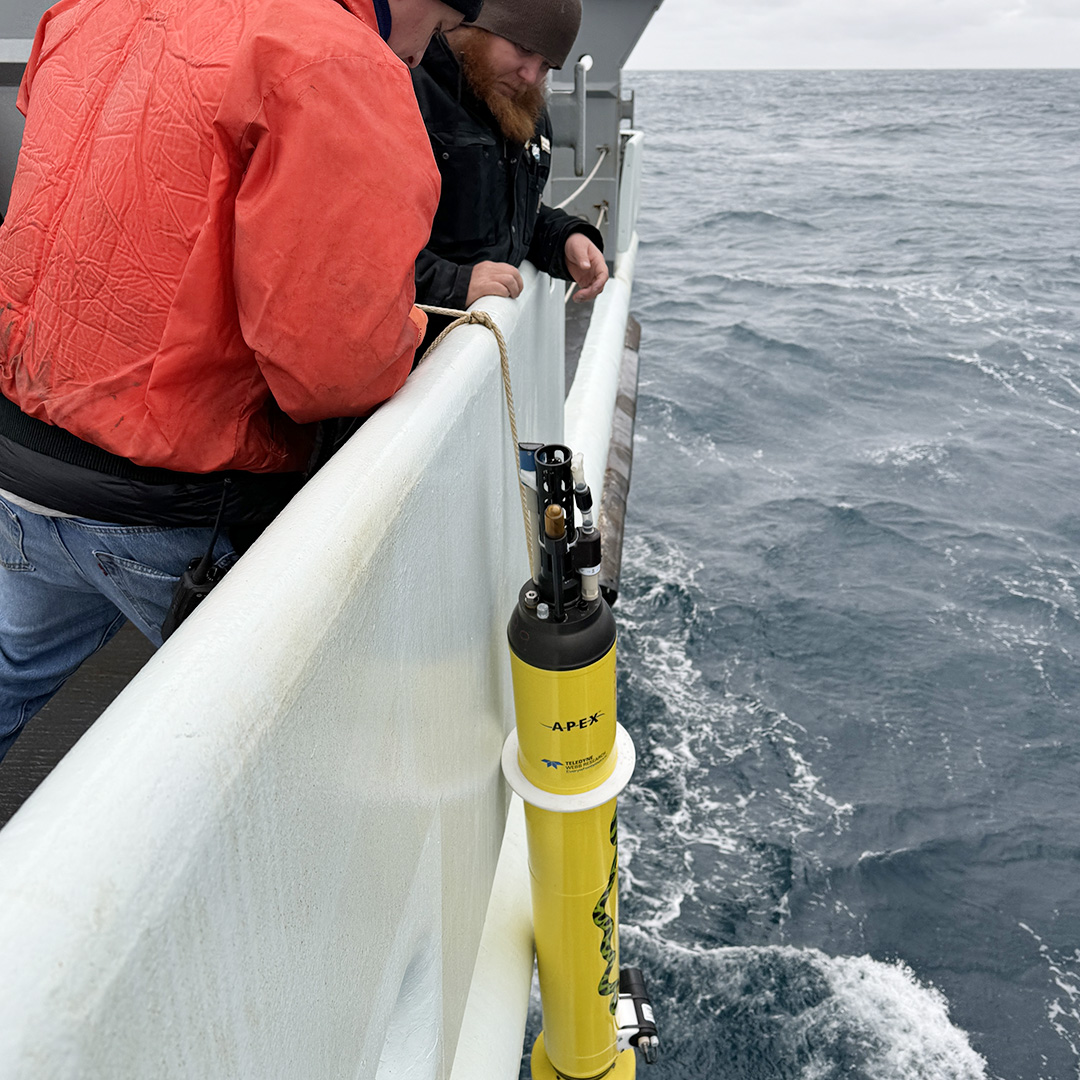
Raphael slithers down the side of the ship.
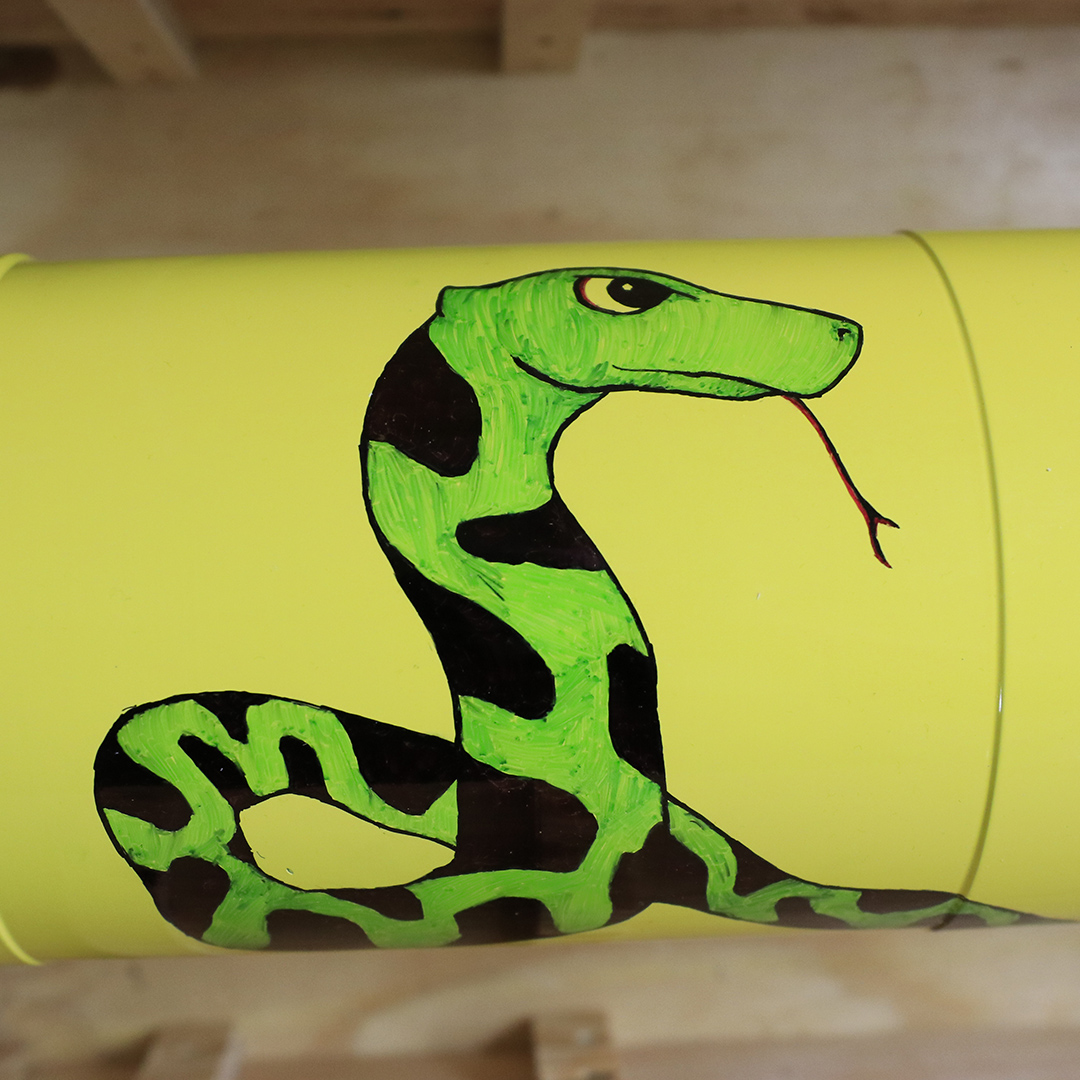
Raphael is adorned with a fantastic snake drawn by CTD watchstander Maria Sanchez Urrea.

Raphael drifts away in the wake of the R/V Thompson.
Like most BGC floats, Raphael is programmed to sample the water column down to 2000m, and in order to avoid coming close to the bottom, it needs to be deployed in water deeper than 3000m. In determining the deployment location for this float, we were trying to keep the float as far south in the Princess Elizabeth Trough as possible while ensuring the water was deep enough. Historically, the bigger obstacle for floats in this region has been the southern end of Kerguelen Plateau, which just loves to attract the floats right up the slope and has been a float-killer in the past. Studying the core Argo and BGC float trajectories through the region shows that if the float is deployed farther south, it should be more likely to pass on through the channel and survive.
In addition, the waters near the deployment site need to be free of sea ice so that the immediate short engineering profile and the first full profile, both of which happen within about 24 hours of deployment, are clear of ice so the float can surface and get its position and transmit the data. ‘Clear of ice’ means that the temperature measured by the float is not at the exact freezing point or colder, which signals to the float that there is sea ice and keeps it from ascending to the surface. If the float is under ice after those first profiles, it’s not a problem—floats deployed in ice-prone regions have sea ice software, which reliably stops the float from ascending the last ~10 meters under ice, based on the sea water temperature that the float is measuring. Floats can ‘disappear’ under ice for many months—sometimes even for a couple of years—and keep on profiling every 10 days. When they are finally clear of ice, they will surface and transmit all of their accumulated profiles. However, since the floats are unable to surface at the end of each profile to attach a GPS position to that profile, any under-ice positions are linearly interpolated between the last known location and first new location.
Raphael can already be found on the interactive SOCCOM float map, which shows current locations and trajectories of SOCCOM biogeochemical floats and provides links to real-time raw and quality-controlled float data. Individual floats can be located using their float number; for example, Raphael is 21499.
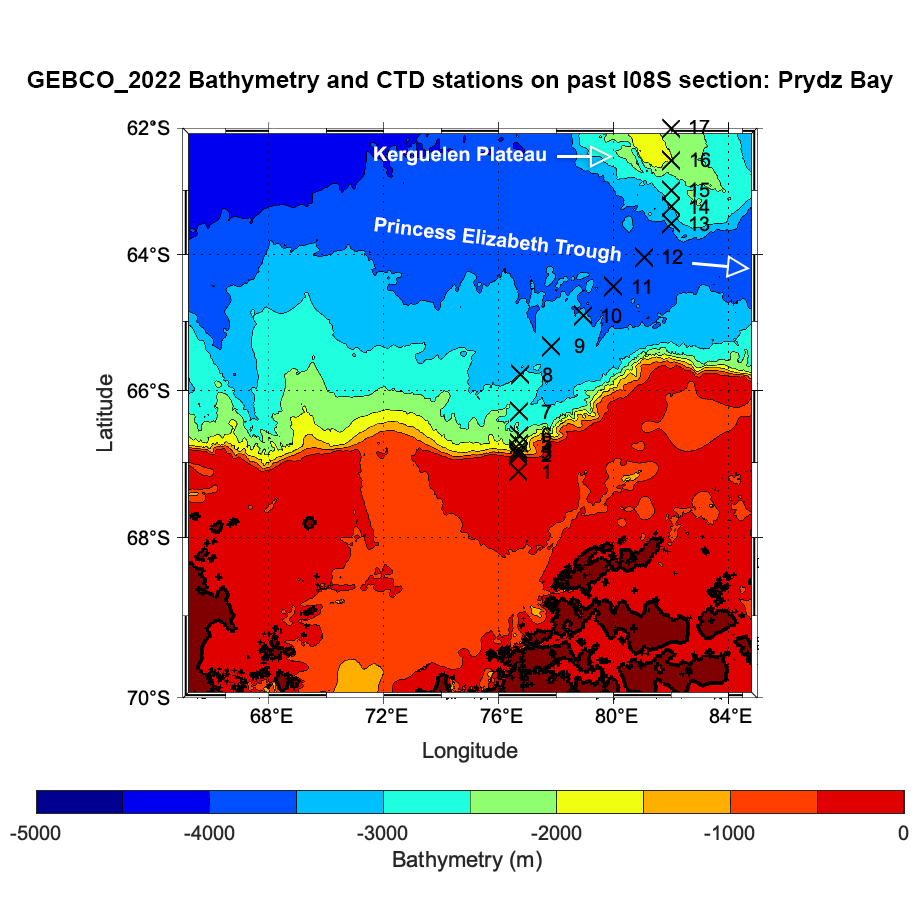
GEBCO_2022 Bathymetry and CTD stations on past I08S section: Prydz Bay. Bathymetry from GEBCO Compilation Group (2022) GEBCO_2022 Grid (doi:10.5285/e0f0bb80-ab44-2739-e053-6c86abc0289c).
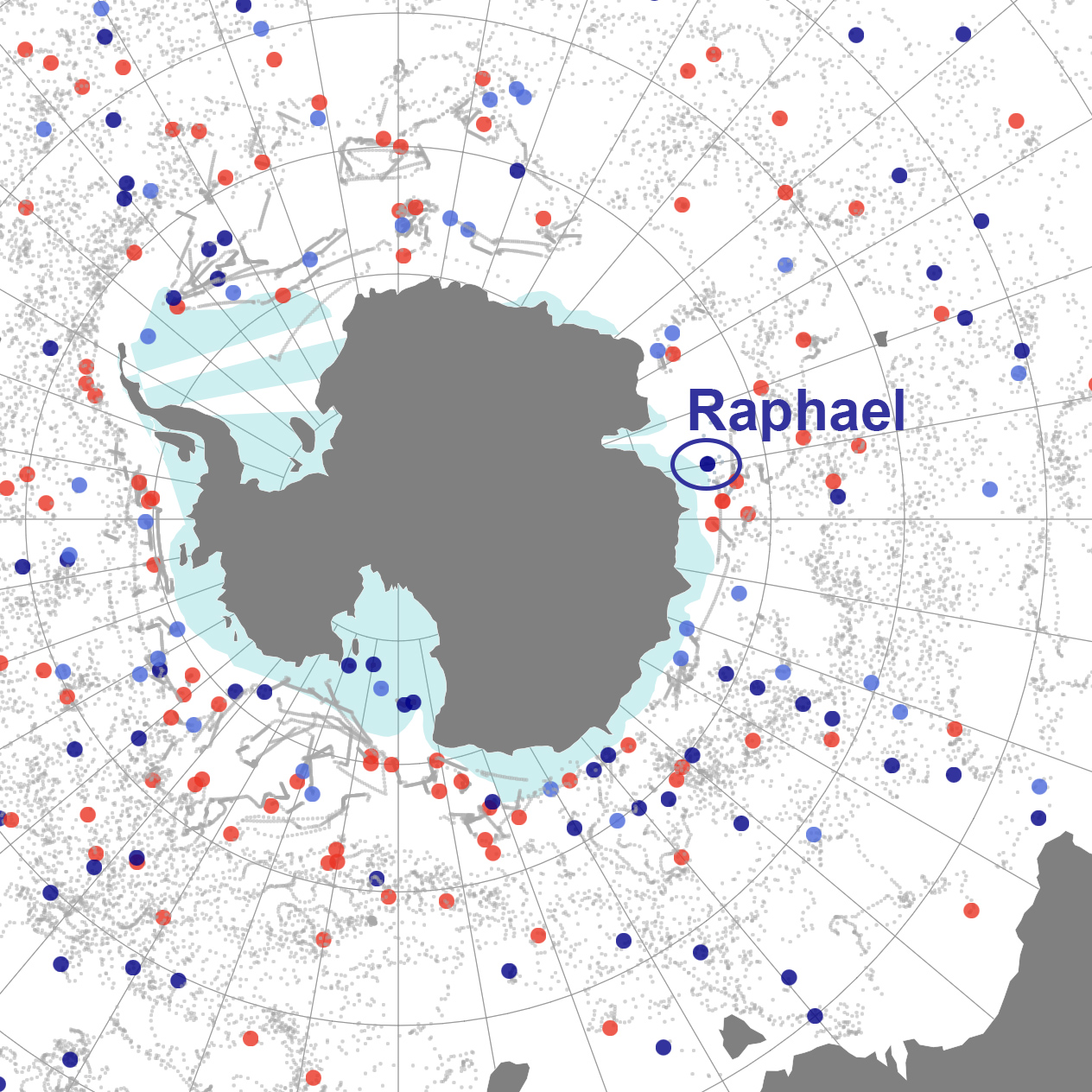
Raphael is shown on the interactive SOCCOM float map.
Raphael’s first profile is already available on the MBARI AdoptAFloatViz website. Students can compare profiles from two or more floats and answer questions of comparison (Which float has a higher maximum nitrate measurement? How do the oxygen measurements compare between the two profiles? Which profile shows a deeper chlorophyll maximum?). Be sure to check out the “For Educators” page on the Adopt-a-Float website, for background information on floats, information on how to access data, and featured lesson plans and activities.
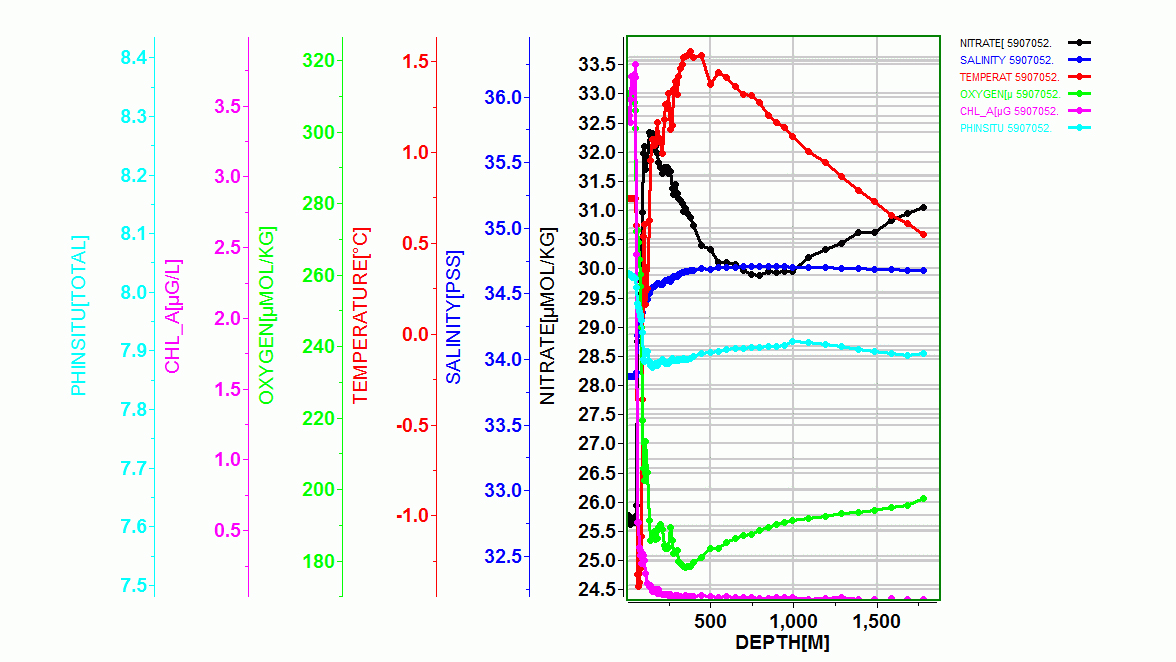
Raphael’s first profile, which can be found on AdoptAFloatViz.
Questions?
I’d love to answer any questions that you or your students have! Please feel free to send them to me at jenn@deepbluescience.com or find me on Instagram at @deepbluescience. As long as the wi-fi holds out, I’ll do my best to answer them.
All images are by Jennifer Magnusson unless otherwise noted.
- Expedition Logs
- 2024 GO-SHIP I08S
- I08S Intro
- Float Checks
- Alphabet Soup
- Trieste
- Weekly Update #1
- Nurse Jennie
- Raphael
- Jess – Salts
- Fishstick!
- Cora – pH
- Swampii
- Southern Ocean
- Seawolves Explore
- Ferruccio
- Abby – pH
- Belmont Bullkelp
- Onboard Sampling
- Vincent – Dissolved Oxygen
- Elisa – Dissolved Oxygen
- Marshal – Alkalinity
- Ruth – CTD
- Vic – DOM
